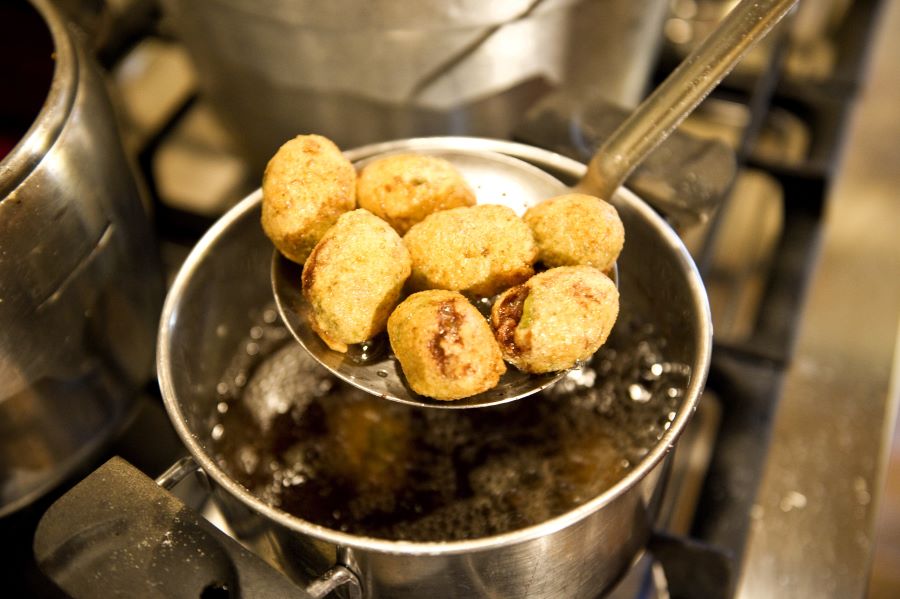One crucial aspect of cooking with olive oil and enjoying it to its full potential is understanding its smoke point. When an oil begins to break down and give off smoke, it releases carcinogens that are detrimental to our health.
Remember, not all ‘olive oil’ is created equal. If your product is labelled as olive oil, light olive oil or olive pomace oil then you are using a refined and processed oil. You can read more about olive oil terminology and the types of olive oil here. (link to terminology page)
What is a smoke point?
The smoke point of an oil is the temperature at which an oil or fat begins to break down and emit smoke. This can determine its suitability for cooking at certain temperatures. The smoke point of extra virgin olive oil is around 190 to 210 degrees Celsius.
Contrary to the popular misconception that EVOO is unsuitable for high-heat cooking, it is ideal for a variety of cooking methods such as sauteing, roasting and frying. When used in this way, extra virgin olive oil enhances the flavour and depth of your dishes with its unique fruity aroma whilst retaining all its nutritional benefits.
It is thought that the misinformation comes from a time when high-quality extra virgin olive oil was not readily available outside of the countries that traditionally produce it. It is most likely that the recommendations on cooking with olive oil come from studies based on refined or blended olive oils rather than the real deal.
Stability
One of the best features of Extra Virgin Olive Oil is that when the oil is heated it retains all its goodness. EVOO boast heart-healthy monounsaturated fats and antioxidants, and when heated to the recommended temperatures, the oil retains all its beneficial compounds.
There is a common myth that cooking with Extra Virgin Olive Oil at any temperature is detrimental to its quality. Research shows that when used within its smoke point, EVOO maintains its integrity and nutritional value.
Oils with a higher content of polyphenols (antioxidants) produce far fewer unwanted compounds when heated. The polyphenols present in EVOO protect the oil from breaking down during the heating process.
Below, you can find some common cooking temperatures to indicate how versatile Extra Virgin Olive Oil is:
| Cooking Method | Temperature Range | Notes |
| Slow Roasting | 300°F / 150°C | Equivalent to a slow cooker |
| Deep Frying | 350°F to 375°F / 175°C to 190°C | Ideal for quick cooking with a crispy exterior. |
| Pan Frying | 350°F / 175°C | Suitable for shallow frying or pan frying |
| Sautéing | 325°F to 375°F / 163°C to 190°C | Quick cooking over medium to high heat. |
| Baking/Reheating | 350°F / 180°C | Perfect for baking and reheating dishes. |
| Roasting | 400°F / 200°C | Ideal for roasting vegetables, meat, proteins, and baked dishes. Also suitable for reheating. |

